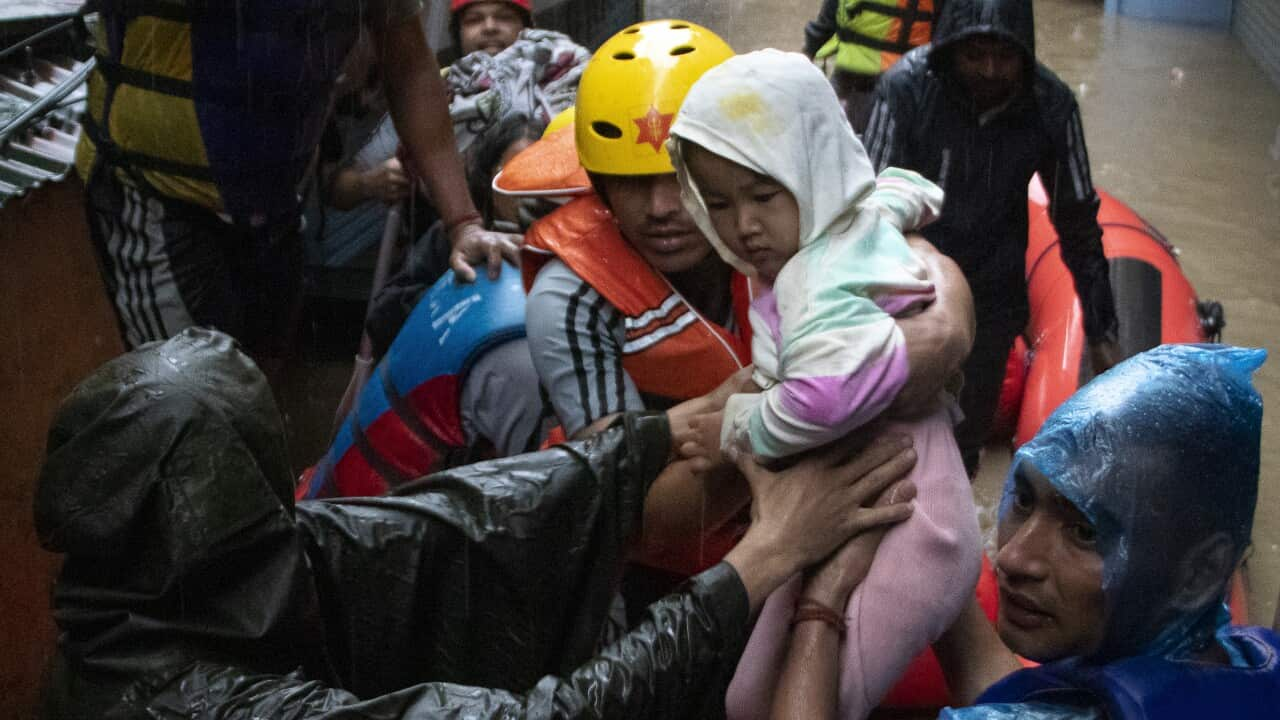Residents of Nepal's flood-hit capital Kathmandu returned to their homes on Sunday to survey the wreckage of devastating floods that have killed at least 170 people across the Himalayan republic.
The background: Deadly rain-related floods and landslides are common across South Asia during the monsoon season from June to September, but experts say climate change is increasing their frequency and severity.
Entire neighbourhoods in Kathmandu were inundated over the weekend, with flash floods reported in rivers coursing through the capital and extensive damage to highways connecting the city with the rest of Nepal.
Weather officials in the capital blamed the rainstorms on a low-pressure system in the Bay of Bengal extending over parts of neighbouring India close to Nepal.

Earthmovers remove mangled car debris from a landslide caused by heavy rains in Kathmandu. Source: AP / Sujan Gurung
What else to know: The Department of Hydrology and Meteorology said preliminary data from stations in 14 districts measured record-breaking rain in the 24 hours to Saturday morning.
A station at the Kathmandu airport recorded about 240 millimetres of rain, the highest since 2002, it said.
What comes next: Humanitarian organisations are helping with search and rescue operations, as well as providing relief.
Jagan Chapagain, head of the International Federation of Red Cross and Red Crescent Societies, said in a post on social platform X that staff and volunteers "are distributing non-food items, providing hygiene kits, and setting up evacuation centres".









